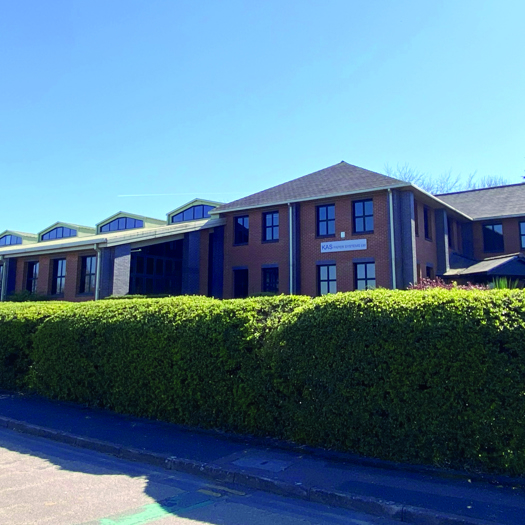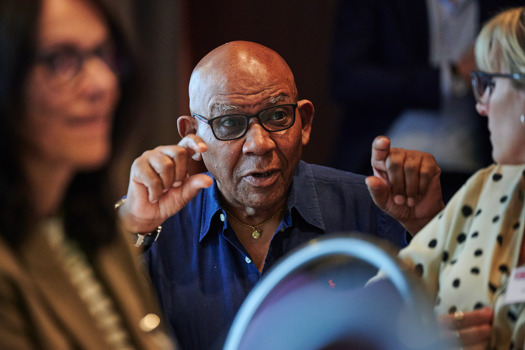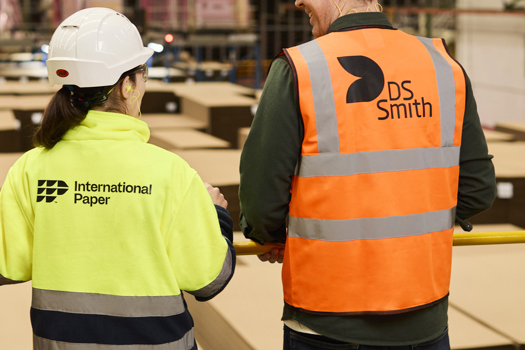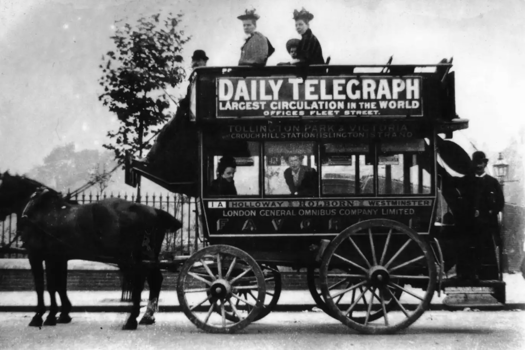“We were young and naive so we left and set up a company called Lake Image Systems,” says Martin Keats, one of the original three, who is now managing director. The other two are also still actively involved, with Paul Smith as technical director and Paul Stinson as sales director.
Lake’s first location was above a guitar shop in Aylesbury, where rather disconcertingly, phone calls were often accompanied by test riffs of ‘Smoke on the Water’ from down below. After a few years the company left the guitar shop behind and moved, firstly in 1998 to a pair of industrial units in nearby Wendover, then in 2006 a few miles further east to a single larger unit on the outskirts of Tring, where it still operates today.
“We originally looked at the canning and bottling sector, to read date codes,” says Keats. “We bought a US system that was good at reading dates.” However, in 1994, loyalty cards were just starting.
Lake Image got a big break with the adoption of loyalty cards by Safeway some 20 years ago, Keats says. “Olwen Direct Mail got a job to mount the cards onto mailshots and needed to verify the line that glued the cards to the documents. Tesco, Boots and WH Smith were among those that followed and the market boomed. We started to concentrate on this side of the market.
“A lot of our first customers were also doing direct mail work on old Bell & Howell inserters. They started to ask us for systems that worked on these too. Previously complex multi-part mailshots were done by hand. We were able to work with small codes, not the big barcodes. It meant that mail houses could insert multi-part mail pieces at 6,000 per hour, rather than using teams of humans for checking.
“This spread into lottery cards, direct mail, transactional, hybrid mail, labels and phone cards. We pulled out of canning and went for machine vision – data integrity, though it wasn’t called that then.”
Today, that’s what Lake still does: it makes very fast camera-based checking and verification systems for the printing industry with a particular expertise in variable data print (VDP).
“We have a variety of camera technologies and techniques that we have developed over 25 years,” says Keats. “We are now all Windows 64-bit so we can develop with that. Others tend to be bespoke Unix and so struggle to keep up with changes in speed and processing needs. We can process gigabytes of data per second: a lot of people cannot process that fast. We’ve been successful as we can keep up with customers’ speed requirements. It’s still challenging, but we can make the changes.”
Big demands
The line scan cameras commonly capture 8k pixels, with 16k increasingly needed. “We buy some cameras and sensors, but we can and do build our own if a suitable camera isn’t available off the shelf,” says Keats. “We handle gigabit images at 50 per minute and process them in real time. Each image is 16,000x10,000dpi.” Very fast PCs with Xeon processors and 8GB RAM are needed to handle these files.
The Tring headquarters site occupies 370sqm and incorporates admin offices plus development offices equipped with 3D CAD to design systems including adapters to fit cameras onto print lines. Lake configures its own PCs and also assembles its own cameras. There’s an engineering section with equipment such as a milling machine to make prototype components.
There is also a small office in Caerphilly, Wales, which employs three specialist programmers with particular expertise in quality inspection. They had previously worked for another imaging company in the area, so wanted to stay in the locality.
Lake soon started exporting and needed an international presence. “In 1998 we opened Lake Image Systems Inc in Rochester, US, to sell, service and support North and South America,” says Keats. “It’s now a mirror of Tring, with some machined production, testing and building to our own specs. They buy PC components locally as there’s no point shipping them over.”
Other international offices followed: Lake Image France in 2008 to address the southern European markets from Marseilles, then Lake Image Systems Asia was opened in Singapore in 2009. “The Asia market ought to be third of of the world market, yet we were doing very little there,” Keats says. “So we decided to promote ourselves. There are two engineers and a sales guy. Sales are mostly via distributors in Asia regions. China is still not as big as we’d like.”
Today Lake employs 45 people worldwide, with 25 in the UK. Turnover is about £7m. Some 60% to 70% of UK production is exported to Asia or Europe. The rest is handled by Rochester for the US, Canada and distributors in South America. About 25% of production goes to OEMs, which often rebadge them. These include some big names in digital presses, but NDAs mean that Lake can’t say which.
Over the years print markets and their verification needs changed, so Lake adapted to these. The direct mail market started declining after 2008. By then digital label printing was taking off, and that’s where a lot of the company’s business comes from today. Now packaging and corrugated converting is starting to go digital too, and Lake has systems to handle these.
“With the rise of digital after the late 2000s, you see variable labels with frequent changes, QR codes and other marketing items,” Keats says. “We can read a web of labels running at speed and check that items that are supposed to be different are correct. Our competitors check that everything is the same: dots, register, etc. But we can check VDP, that what is supposed to be different is also correct.
“There’s also a growing a need for quality colour print inspection. We can do both and for the past four or five years this has been our main development. We can compete with AVT and BST on the quality side and we also do VDP. The others say they can do VDP but ours is more comprehensive for complexity.”
Taking on fakes
A recent trend has been security print, with Lake’s systems used to detect and verify anti-counterfeiting measures that brands are adding to increasingly wide ranges of products. “All our big orders lately have been from label houses for narrow web, for brand protection,” says Keats. “Labels now have multiple anti-counterfeiting measures, from the substrate upward. Flexible packaging can be very fast with multiple lanes and lots to read and record. We tend to fit high speed units, for up to 350m/min. We are looking at pharma packaging too, eg blister packs in India. Pharma packs are actually not too demanding, as they run at lower speeds. However, even a comma changing into a dot can change the meaning. Pharma instructions are 4pt, so small.
“The nice thing is that there’s nothing else can do this. There are easier markets, so others go for those. Two or three other companies tried the others then backed away. They came to us and we got the work.”
Lake’s group marketing manager Nick Khatri adds: “We are the ones called in when everyone else has failed. But we are less well known compared to others. We need to market ourselves and become better known in packaging.”
Nearly every customer has different requirements, so most systems are customised from a core set of hardware and software tools. However at Labelexpo in September Lake launched a new all-in-one standard product that it hopes will let it take on its rivals on their home ground, of print quality verification. It is called Discovery PQExpress and offers a packaged solution including; inspection camera, lighting and web rollers enclosed in a compact, robust housing. There are options for web widths of 330mm, 430mm and 530mm, for web speeds up to 350m/min. A PC and touchscreen controller are also included.
According to Khatri, “it’s 30% cheaper than our competitors. It’s a door-opener for us, a disruptive product.
“It may be that a non-VDP firm hasn’t been able to afford inspection before, so this gets us in. If they move into VDP in future, we can continue the relationship and build on it.”
Keats sums up Lake’s philosophy: “We’ve always gone for the complex issues: where are the difficulties, and let’s solve them. Others walk away from complexity and just want to sell boxes. We are often only a small part of a production line’s value, but the line will not work without us.”
STAR PRODUCT
Khatri says: “We have one platform with lots of plugins tools for measurements, print quality, reading bar-codes etc. So our USP is expertise in configuring, lighting, environment, and the combination is what allows us to deliver the solutions. We have a unique set of skills developed over the past 25 years.”










